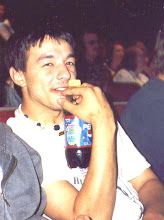Experts Say Rural Meth Addicts Hardest Hit (Arkansas)
By Maria Hegstad
Stephens Washington Bureau • mhegstad@stephensmedia.com
WASHINGTON — Methamphetamine use has hit rural communities the hardest, and those also are areas where treatment programs are most limited, experts told Congress on Wednesday.
A common but untrue belief is that meth users can’t overcome their addictions, said Richard Rawson, a professor at the University of California at Los Angeles. Rawson said his UCLA clinic treats people addicted to alcohol, cocaine, heroin and meth. Meth users have success rates similar to other addicts.
But those addicts who most need help can’t get to it, said Leah Heaston, a director of treatment centers in rural Indiana, told the House Subcommittee on Criminal Justice, Drug Policy and Human Resources.
Finding and retaining qualified staff is difficult in rural areas, Heaston said. She described constant job openings at her clinics and pointed out the high cost of training new staff.
Arkansas is among 12 states with nearly 1 percent or more of the population over the age of 12 having used meth in 2001, 2002 or 2003, according to a study released last fall by Department of Health and Human Services.
Seven percent of high school girls in Arkansas and 10 percent of high school boys reported using meth in a U.S. Center for Disease Control survey released earlier this month.
One positive sign for rural areas is the decrease of home-cooking meth labs, said Rep. Mark Souder, R-Ind., the subcommittee chairman. The reductions can be attributed to laws limiting the sale of cold medications containing psuedoephedrine, an ingredient in home-cooked meth, said Bertha Madras, a deputy director in the White House’s drug control policy office.
But Rep. Patrick McHenry, R-N.C., said police in his rural district have seen addicts circumventing these laws. He asked Madras how law enforcement and drug treatment programs could better cooperate.
Madras lauded drug courts, which she said provide the best means of providing users with incentive to attend treatment. McHenry agreed, but said in rural areas there aren’t enough of them. Heaston also described transportation problems: Many rural communities have no public transit system.
Cost for treatment is another problem. The treatment program touted to congressmen on Wednesday, the Matrix Model, costs $6,000 per person, Heaston said. Many users are not able to afford it. They have often been in jail, have felony drug records, and have lost their homes, cars and jobs because of their drug use, she said.
Her description was confirmed by two recently reformed meth addicts who testified. Darren and Aaronette Noble of St. Louis described years of jail time, drug use, arrests and living out of their car.
“When I was using meth, I felt dead most of the time,” Aaronette Noble said. “My teeth and my hair were falling out, and other people had custody of my children.”
The Nobles and another former meth addict, Russell Cronkheit of Fairfax County, Va., described the transformation that treatment and recovery meant for their lives. Their message: Meth addiction can be treated, but it is difficult.
http://www.swtimes.com/articles/2006/07/03/news/news08.txt


0 Comments:
Post a Comment
Subscribe to Post Comments [Atom]
<< Home